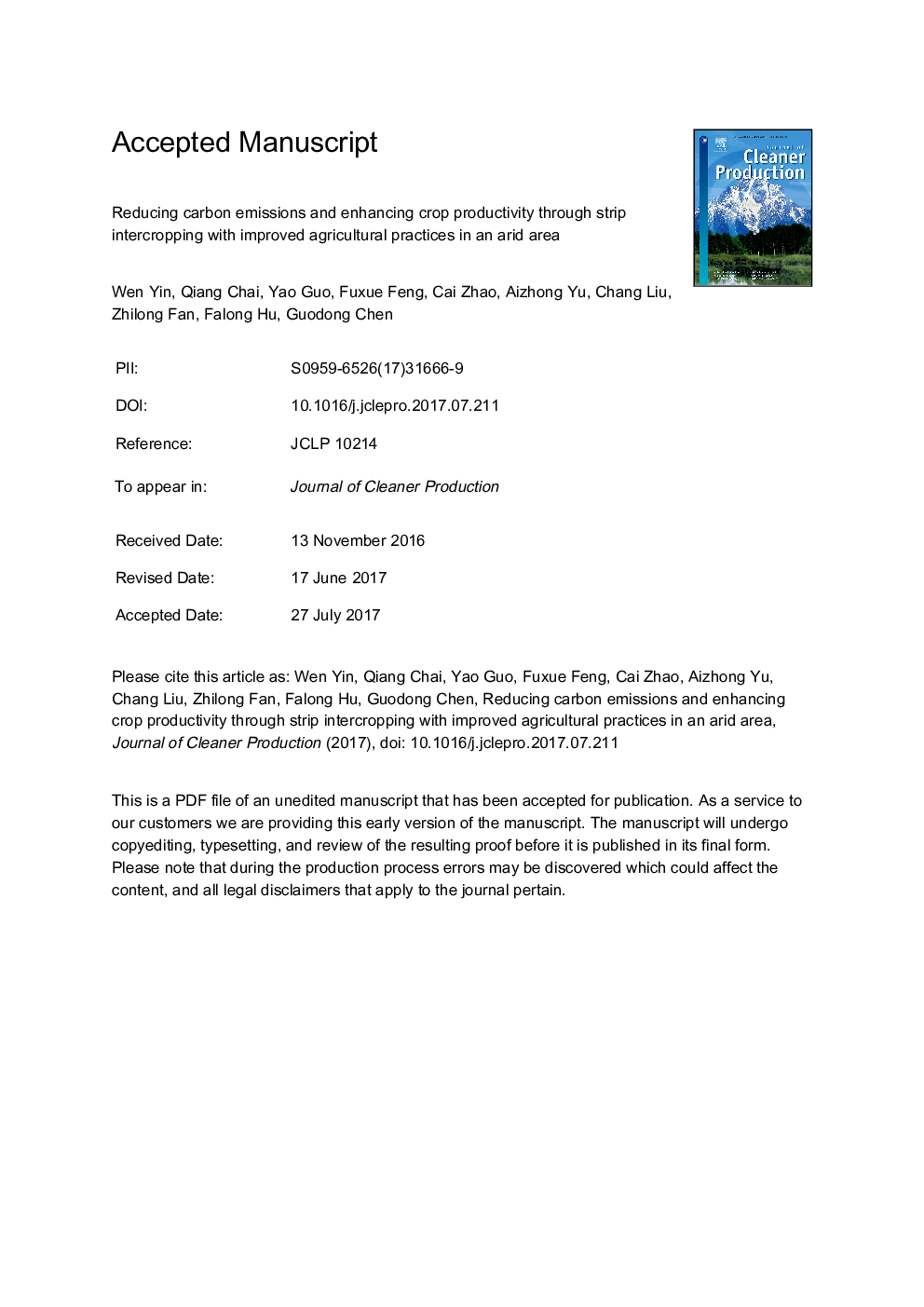| کد مقاله | کد نشریه | سال انتشار | مقاله انگلیسی | نسخه تمام متن |
|---|---|---|---|---|
| 5479897 | 1522088 | 2017 | 42 صفحه PDF | دانلود رایگان |
عنوان انگلیسی مقاله ISI
Reducing carbon emissions and enhancing crop productivity through strip intercropping with improved agricultural practices in an arid area
ترجمه فارسی عنوان
کاهش انتشار کربن و افزایش بهره وری محصول از طریق کشت مخلوط نوار با روش های بهبود کشاورزی در یک منطقه خشک
دانلود مقاله + سفارش ترجمه
دانلود مقاله ISI انگلیسی
رایگان برای ایرانیان
کلمات کلیدی
مخلوط کردن نوار، نگهداری کوه، دو سال فیلم مالچ پلاستیکی انتشار کربن، تداخل کربن، پایداری،
موضوعات مرتبط
مهندسی و علوم پایه
مهندسی انرژی
انرژی های تجدید پذیر، توسعه پایدار و محیط زیست
چکیده انگلیسی
Intercropping is reported to enhance crop production and be a better use of land, thermal radiation and nutrients in many areas around the world. However, intercropping is always yield-advantageous, but consumes more water. Meanwhile, the intercropping advantage is usually attributed to the high inputs of resources, which lead to increased carbon emissions. It is unclear whether developing an improved agricultural production pattern could relieve this situation and enhance farming productivity in water-limited arid areas. A field experiment using an improved system was conducted at an arid oasis region in northwestern China in 2014, 2015, and 2016. No-tillage coupled with two-year plastic film mulching and straw retention measures were integrated into intensified strip intercropping, and the effects on the crop yield, water use, and carbon emissions characteristics were determined. A sustainable evaluation index integrating several key parameters related to yield, water use, and carbon emission was created. We found that a wheat/maize intercropping pattern boosted the grain yield by 12.8 and 131.0% compared to the average yield of maize and wheat monoculture, respectively. The intercropping under no-tillage with straw covering and two-year plastic film mulching treatment (i.e., NTSI2) yielded 17009 kg haâ1, an increase of 14.9%, in the three studied years compared to an intercropping pattern with conventional treatment (i.e., CTI). The wheat-maize intercrops produced 5.9 and 113.7% more energy yield than monoculture maize and wheat, respectively, and NTSI2 had a 6.6% greater energy yield than CTI. NTSI2 improved the water use efficiency based on the grain and energy yields by 15.5 and 7.1%, respectively, over the CTI treatment. The carbon emissions of wheat/maize intercropping pattern were 18.9% lower than maize monoculture, and NTSI2 treatment reduced carbon emissions over CTI by 14.7%. Compared with maize monoculture, the wheat/maize intercrops had a 27.2% lower water use efficiency based on carbon emissions, and the NTSI2 treatment was reduced by 14.4% compared to CTI. However, wheat/maize intercropping had a greater carbon emission efficiency of 39.9% than monoculture maize, and the NTSI2 treatment was increased by 34.7% in the three studied years than that of CTI. The wheat/maize intercropping pattern achieved the highest evaluation index among the three cropping patterns evaluated, and the NTSI2 treatment had the highest sustainable index among the four intercropping treatments assessed. Therefore, wheat/maize intercropping of no-tillage with two-year plastic film mulching and straw covering is the most sustainable and effective cropping production pattern in arid Oasis regions.
ناشر
Database: Elsevier - ScienceDirect (ساینس دایرکت)
Journal: Journal of Cleaner Production - Volume 166, 10 November 2017, Pages 197-208
Journal: Journal of Cleaner Production - Volume 166, 10 November 2017, Pages 197-208
نویسندگان
Wen Yin, Qiang Chai, Yao Guo, Fuxue Feng, Cai Zhao, Aizhong Yu, Chang Liu, Zhilong Fan, Falong Hu, Guodong Chen,
